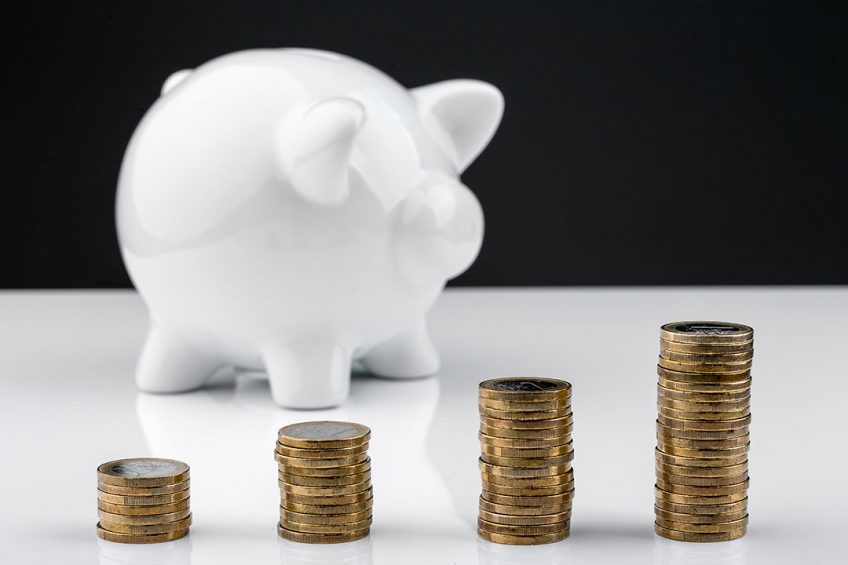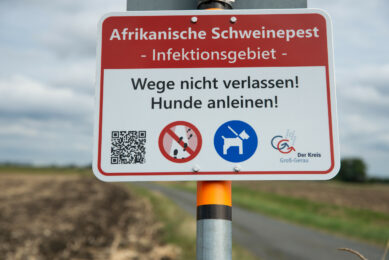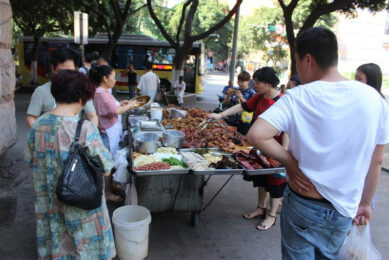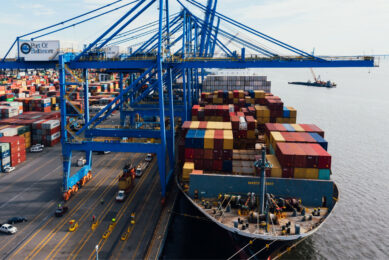Quarterly update: Good fortune for pig producers in 2020

A few wild boar crossing a river in Europe – or one tweet by the US president. Small unforeseen things like these might have a huge impact on global pig and pork trade in 2020. Putting aside the effects of the unexpected, however, the outlook for 2020 looks pretty rosy, writes pig market expert Dr John Strak in his quarterly update.
It’s that time of year again, the time when we look back and wonder why we didn’t see what now seems obvious, and we look forward and try to balance hope against reality with only incomplete data to rely upon. It’s the Chinese New Year in a few weeks’ time and the Year of the Rat is said to bring wealth and good fortune – my words and numbers that follow suggest pig farmers will share in that good fortune in 2020.
It’s certainly been an extraordinary 12 months in 2019 – and we should remember that the extremes that have been seen over the last year are just that, extremes. Personal and business decisions should be careful to avoid placing too much emphasis on outliers to the normal distribution – and so should economic and statistical analyses. That said, when extraordinary data pop up almost every month it becomes hard to not give them due weight.
What was 2019 like for pigs and pork?
I am writing this at the end of December 2019 and in the early days of January 2020. Looking back to the same time last year I gave you my views on how 2019 would turn out for the global market for pigs and pork.
At this time last year I wrote, “2019 could be a very bad year for (US) pig producers’ margins. […] My prediction is that we could see a record low for US hog prices in 2019.”
Well, margins for US producers weren’t good last year and although we didn’t quite see a record low for US hog prices, we came very close to it. There were some very anxious moments for US producers, especially in the 1st and final quarters of 2019. But prices bounced around as the markets speculated about ASF in China and the US price hit some highs. The swings from gloom to exuberance in the US market are illustrated in Figures 1 and 2. These charts show the behaviour of US prices throughout 2019 and, for context, over nearly 20 years.
Figure 1 – US daily hog prices, 2015-2019, $ /cwt dead weight.

Record highs for hog production in 2019
Figure 1 illustrates how US hog prices have behaved throughout 2019 compared with recent years and Figure 2 presents price data going back to the year 2000. The USDA’s regular hog census proclaimed several record highs for hog production in 2018 – but all these records were broken again in 2019.
Figure 2 – US daily hog prices, June 2000-December 2019.

The latest US hog census (23 December 2019) estimates that record highs were achieved for the US market hogs inventory and the average pigs saved per litter. The number of market hogs, at 70.9 million head, was up 3.1% from last year and productivity has increased month after month in 2019. The average pigs saved per litter in the USA was 11.09 in the September-November period for 2019 and this is another new record. The total inventory of hogs and pigs on December 1, 2019 was 77.3 million head. This is up 3% from December 1, 2018.
The breeding inventory, at 6.46 million head, is up 2.1% from last year. Even though hog prices were relatively low in 2019 farmers kept increasing herd numbers and breeding efficiency. This combination is unusual but allows me to make one safe prediction for 2020 – there will be record numbers of hogs brought to market in the USA in the next 12 months. And, I consider the US market for hogs to be on a knife edge – I really wonder if the USA’s slaughter capacity and customer demand can absorb all the hogs coming through the pipeline in 2020. A record low for US hog prices in the USA could yet be seen.

Mood in European pig production
The mood in Europe was definitely gloomy in the 1st quarter of 2019 and herd numbers declined in many countries throughout the 1st half of 2019. Although the census data are not yet generally available for the 2nd half of 2019, it’s likely that the surge in pig prices in the 2nd half of the year has had an impact on farmers’ herd replacement and expansion decisions.
That said, the October census in Denmark showed total pig numbers down 2% and the breeding herd down 3%. Similarly, in the German November census the total inventory of pigs was down 2% and the total breeding herd was down by 3%. It’s difficult to believe that farmers, reacting to the very strong increase in prices in late 2019, will not, at least, make marginal changes to increase their herd numbers and I expect that EU pig numbers and pigmeat production will recover in 2020.

Interested to look back a little? Read Dr Strak’s analysis over the previous quarter
Global hog prices are in an upward phase
In the very early days of 2019, I wrote that the global pig price index provided few, if any, signals, “in these data that suggests an upturn is just around the corner.” My prediction then was that we will have to wait until the mid-point of 2019 before these price models show conclusive proof that, on average, global hog prices are in an upward phase of their cycle. I was correct about that and by the end of April I noted, “It looked like the winds of change are blowing through the global pork market.”
Figure 3 – Global pig cycle: Jan 2011-Sept 2019.

Figure 3 illustrates where the global pig price index is now (as of December 2019) – well into the upward phase of the cycle.
And my prediction for 2020 is that this upward phase will continue and I do not expect any signs of a turning point in the cycle until the middle part of the year. Events that would bring that turning point forward are:
- a new vaccine for ASF;
- a faster than expected increase in global chicken production and other alternatives to pork in 2019;
- a global recession; and/or
- a big fall in consumer incomes in China.
Regionalisation for animal disease outbreaks
One other signal for the turning point (and the continued upward movement) in global pig and pork prices is the policy that China adopts/modifies for regionalisation and zoning of animal disease outbreaks. At the moment, China does not recognise such zoning with regard to ASF from Europe and this implies that a new outbreak of ASF in one of its supplying countries for pigmeat could have a dramatic effect on its pigmeat imports.
A few infected wild boar in Germany could remove, overnight, 20% of China’s current imports (from Germany) unless the current zoning arrangements are amended.

What is the ASF situation in Eastern Europe currently?
Similarly, the news from Washington on the trade war with China is that relations have improved and this implies that the USA could increase its pigmeat imports to China in 2020 – but who knows what president Trump will tweet next? These 2 factors, disease incidence and trade policy dominated 2019 and they have the potential to screw up any prediction (or economist’s price model) for 2020.
Figure 4 – Chinese hog price 2009-December 2019 (dead weight, weekly).

Long-run changes in Chinese hog prices
A final word on China is necessary and Figures 4 and 5 are relevant. These show the long-run changes in Chinese hog prices and the behaviour of hog prices in 2019. Clearly, 2019 was an extraordinary year in China for hog prices. These price changes present a very difficult problem for the price forecaster and most, if not all, price forecasting models would struggle to accommodate this price volatility in 2019 in any price forecasting for 2020 and beyond. Other ways of making judgements about the future are necessary and, to that end, I was in China in the 2nd week of January. A number of things struck me on this trip.

First, there is no mood of panic or gloom in the wholesale and retail markets that I visited. Prices are high (I saw prices in Beijing’s largest wholesale market that were significantly higher than shown in these figures but that may just be a time lag in the data) but I didn’t see or hear riots at the meat counter. The Chinese consumer just seems to be getting on with it.

Second, it’s not clear how the authorities will translate policy decisions (more investment, better biosecurity, restructuring and relocation of the pig industry in China, etc) into action quickly (and the equivalent decisions for alternative proteins like chicken, ducks, etc). But this last point may have to wait until another visit as it is the most difficult one to assess.
Figure 5 – Weekly Chinese dead weight hog prices, 2016-December 2019.

Consumption of dairy products increased
It has been pointed out to me that as the consumption of dairy products has increased in China, China has become the main driver to the global trade in dairy products. Equally, now that China has such a great need for pigmeat imports to fill its domestic supply gap we can expect China to be the main driver of the global pork trade in the years ahead.
There have been hints of China’s emerging role in the last few years but this is now a new aspect of global pork prices – and thus the global pig price cycle. So, what do I think China’s hog prices will do in 2020? My view is that a new baseline will be established in the RMB35-45/kg range (dead weight factory price).
We will have a better view of where China’s hog price will settle after the Chinese New Year in late January but, whatever happens short term, I believe we will see firm and rising prices for all farmers producing pigs in the coming year (if they avoid ASF). Meanwhile, because it’s not just about the money, I wish all my readers a happy and healthy New Year.











